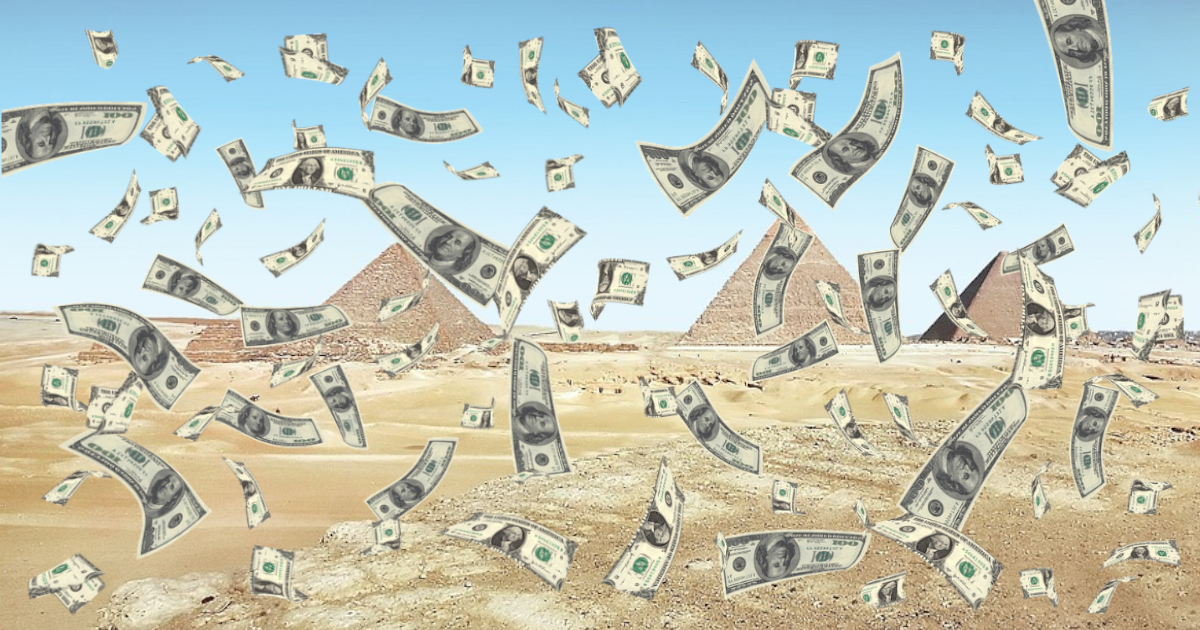

Netflix’s Madoff:
Can It Happen Again
Proto Pyramid...
Ponzi schemes, also known as pyramid schemes, are a certain type of investment fraud that pays current investors with funds taken from new investors. In the 1920s, Charles Ponzi promised quick, risk-free returns of up to 50% for what he claimed was an investment in international mail coupons. Ponzi used deposits from new investors to pay phony returns to previous investors. With scant or no actual profits from investment activities, Ponzi schemes rely upon a steady influx of deposits to pay out fabricated returns or satisfy withdrawal requests. Ponzi schemes collapse if too many redemption requests are made or if it becomes difficult to find new investors.
Ponzi Prime
Though Charles Ponzi is often credited as the first to use a pyramid scheme, frauds labeled with his namesake continue. Ponzi investment scams persist and have recently proliferated in the crypto asset space. The US Securities and Exchange Commission (SEC) has made five ponzi-scheme charges since 2022, three of which were crypto-related. Crypto-based Ponzi schemes have sprouted globally as well. For example, with a high number of crypto-related pyramid schemes, an area of Brazil has been referred to as the “new Egypt”. Though the largest of the SEC Ponzi charges since 2022 involved an astounding $600 million, that amount is dwarfed by the billions of dollars taken from investors in the largest Ponzi scheme in history. In December of 2008, Bernie Madoff confessed to operating a staggering pyramid scheme. The stunning story of how Madoff ran his Ponzi scheme for perhaps decades, evading detection by authorities, is told in the recent Netflix docuseries, “Madoff: The Monster of Wall Street”. Madoff’s scheme brought in a staggering $20 billion from tens of thousands of investors before crumbling amid the 2007 Financial Crisis, and after multiple missed opportunities by regulators to uncover the scam.
Wolf in Sheep’s Clothes
Perhaps one of the most astounding parts of the Madoff scheme is that so many individuals, as well as finance firms, did business with an unregistered advisory firm. For those who chose to send Madoff money, it likely seemed like a sound choice. After all, Madoff was involved in the creation of the electronic Nasdaq stock exchange, ran a well-known market making firm, and sat on the board of governors of the National Association of Securities Dealers, the predecessor to the Financial Industry Regulatory Authority (FINRA). Madoff’s victims ranged from average retirees, finance firms, to high profile individuals including Kevin Bacon, Larry King, John Malkovich, and Steven Spielberg. It appears that many of Madoff's victims may have assumed that because his market making business was legitimate, the money management side of the business must have also been legit. Market making firms take the other side of trades for incoming orders, executing order flow for other broker-dealers and otherwise trading for their own accounts. Market making and providing investment advice or asset management are separate services, and any firm managing client money would need to be registered as an advisor. Though Madoff had a legitimate market making firm, the firm was not registered as an investment advisor.
BrokerCheck Upgrade
Though In 1988, FINRA established the Public Disclosure Program to provide the public with information on the professional background of investment professionals. In 1998, internet access was made available for the program. By 2002, most inquiries were made online, leading FINRA to create a central electronic gateway to information about broker-dealers called BrokerCheck. In the wake of the Financial Crisis of 2007, in an attempt to enhance transparency and accountability within the financial system, regulators required the SEC to review how investors accessed information about finance professionals. As mandated by the Dodd–Frank Wall Street Reform and Consumer Protection Act of 2010, updates were made to BrokerCheck. The upgrades combined two separate databases so investors could simultaneously search for information about broker-dealers and investment advisors. FINRA also expanded the search functions of BrokerCheck to allow searches based on location.
Unregistered & Unnoticed
Although the first incarnation of BrokerCheck existed since 1988, one writer called its early versions “an obscure tool used only by industry insiders”. Even if someone did attempt to verify the registration of Madoff's firm, unless they understood the difference between brokers and advisors, they may have been satisfied by a valid broker registration, not knowing it was unrelated to advisor services. With the combination of broker and advisor databases in BrokerCheck, along with educational material and definitions that were added during its upgrade, relevant information about investment professionals may be more accessible to investors than during the period of Madoff’s Ponzi scam.
Unsent Letters
Though whistleblowers began sounding alarms in 1992, regulators failed to uncover Madoff's fraud despite several investigations. A report by the SEC's Inspector General (IG) found multiple missed opportunities to discover the scam. Another interesting part of the story is that when Madoff did submit stock transaction records to investigators, he used fabricated documents. The IG report found several instances across separate investigations where regulators drafted letters requesting third-party verification of Madoff’s account activity, but never mailed them. The IG found that if third-party verification had been done, the fraud would have potentially been revealed as early as 1992.
Potential Sequel…
In contrast to the era of the SEC having to request data from third-parties by mail, they now have mountains of market data at their immediate fingertips. In 2013, the SEC launched the Market Information Data Analytics System (MIDAS). MIDAS provides regulators with enormous amounts of transaction details that can be used to monitor markets. If someone tried to use phony trade blotters today, it would not work, as regulators would already have access to transaction information. Although Ponzi schemes will unfortunately continue, at least some of the conditions and circumstances that allowed Madoff’s fraud to go undetected for so long and to reach such a gigantic size may no longer exist. Currently, the Madoff Victim Fund has distributed over $4 billion, and 40,454 victims have recovered 88% of their fraud losses.
March 15, 2023
Sources:
(2009). U.S. Securities and Exchange Commission Office of Investigations. “Investigation of failure of the SEC to uncover Bernard Madoff’s Ponzi scheme”.(2011). U.S. Securities and Exchange Commission Office of Investor Education and Advocacy. “Study and recommendations on improved investor access to registration information about investment advisers and broker-dealers”.
The SEC lists the following potential warning signs of a Ponzi scheme:
High returns with little or no risk
Overly consistent returns
Unregistered investments
Unlicensed sellers
Secretive, complex strategies
Issues with paperwork
Difficulty receiving payments
If you suspect you are the victim of financial fraud, resources are available from FINRA and the IRS.
Markets Demystified is published the first and third Wednesdays of each month, and explores how stock market investing can relate to personal finance.
Thanks for Reading!
Sincerely,
Jonathon Oden
Owner | Aesop Advisor LLC
Aesop Advisor LLC advertisements including newsletters and other publications are for informational purposes only. They do not attempt to predict future stock market moves and are not intended as individual investment advice. Aesop Advisor LLC newsletters and publications are not recommendations to buy, sell or hold any asset and are not intended as actionable investment advice or market timing. Equities references generally refer to the overall stock market, though if individual companies are mentioned, it is not a recommendation to buy, sell, or hold shares of the company. Unless otherwise indicated, terms including "stocks", the "stock market", and "market(s)" refer to Standard & Poor's 500 index. All investments involve risk and the past performance of a security or financial product does not guarantee future results or returns. While diversification may help spread risk, it does not assure a profit or protect against loss. There is always the potential of losing money when you invest in securities or other financial products. Publications and advertisements from Aesop Advisor LLC are not intended as investment, legal, or tax advice. Although gathered from sources believed to be reliable, Aesop Advisor LLC cannot guarantee the accuracy and completeness of data or information presented in publications and advertisements. This is an advertisement.